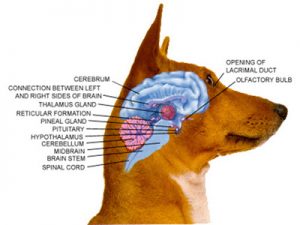Do Dogs Have Emotions Like People? Dog Behavior Training in Northern Virginia
After training a few dogs and scanning them, scientists end result was that dogs too are people! It is just that because dogs can’t talk, scientists have depended on their behavioral interpretationsand come to a conclusion as to what dogs are thinking. It is indeed a tricky job. You can’t question a dog as to why he did something and you surely can’t ask him how he feels about what he did .The prospect of delving into an animal’s emotions has scared the scientist, because animal research has been a difficult task. It has been only normal to keep aside the questions of animal emotions because the answers are not easy.
By looking into their brains directly and surpassing the behavioral observation, an M.R.I scan informs us about the dogs’inner state. M.R.I.s are done in very noisy and confined areas. People don’t like them as they need to hold still during the process. The normal veterinary procedure would be to put the animal under anesthesia to avoid movement from the animal. But when an animal is anesthetized it makes it difficult to study the functioning of the brain. At least the emotions.
Now to do this scan they had the consent of the owner of the dog and a form filled and signed by him. It was agreed upon that the participation was voluntary and the dog could quit if necessary. The dog if necessary could leave the M. R. I. scanner similar to a human volunteer.
The dog was taught to walk the steps and follow up that into a tube and rest the head in a custom made chin rest, and also stay still for thirty seconds, and yes it had to learn to put on earmuffs to shield the sensitive hearing from the noise the scanners make.
Months of training on a trial and error basis including at the actual M.R.I scanner, they were handsomely gifted with the mapping of the dog’s brain activity. The first tests were measured with the two hand signals caught on the scanner
In the experiments conducted later they were able to distinguish the odor of familiar and unfamiliar dogs and human beings. Soon the community for local dogs here got to know of our tests that were conducted on what the dogs were thinking, and in a short span of a year there were a dozen M.R.I certified dogs.
Even though scientists were beginning to answer a few basic questions about a dog’s brain, they can’t ignore the resemblance of the dog’s brain to that of a human’s, especially in the areas of key brains functions.
Abundant in dopamine receptors caudate is placed between the brainstem and cortex. In humans the caudate plays an important role in recognizing the things we enjoy like money, food and love. But can we change this connection around by measuring the caudate actions. This is usually not possible because of the complex working nature of the brain. It is a known fact that the brain is well connected and it’s not possible to nail down one single function or emotion to one particular brain region.
But the caudate could be an exception. Certain parts of the caudate stand apart for their consistent recognition of the things that humans enjoy. Caudate is so active that under the circumstances it can single out our preference for food, beauty and even music.
Among dogs we found that the response in the caudate increased to the response of the hand signal, prompting food. The caudate also responded to the odor of familiar humans.
Are these test proving that dogs love us? Not true, but the same reasons that activate the human caudate which are linked to positive feelings are also activated in a dog caudate. Neuroscientists have termed this functional homology, and this could be an indication of dogs’ emotions.
The capability of experiencing positive emotions, like attachment and love, means that dogs do have a level of sentiments compared to a child. This is something we need to think as to how we treat dogs.
Dogs for long have been treated as property. Even though in 1966 the animal’s welfare act and the laws of the state have questioned the treatment for animals they are of view that they are things- objects which could be disposed of, only when reasonable care is given to control their suffering.
After these test and M.R.I scans we can no longer shy away from the fact that dogs and many other animals have emotions similar to humans and to consider them as property may not be in their better interests.
An alternative to this may be may be to consider partial personhood to animals that display neurobiological proof of emotions. Various animal rescue groups have coined the word ‘guardian’ for animal caregivers thereby making it obligatory for the human to take up the responsibility of caring for his ward.
If we go further and grant them personhood, they will be given additional protection from exploitation. Dogs for racing and puppy mills will be banned for violating their basic rights by exploitation.
It is presumed that our society is years behind in considering dogs as a persons. Nevertheless, the Supreme Court has opened the doors for such possibilities after the neuroscientific findings.
In couple of cases the court has ruled that the juvenile offenders should not be given a life sentence if there is no possibility of granting parole. Apart from the rulings the court gave brain mapping evidence that brain is not mature enough when in the adolescent stage.
If you are interested in learning more about your dog’s behavior, body language, or training; contact us at Off Leash K9 Training!
888-413-0896
[email protected]
Nick White
Owner/Founder
Off Leash K9 Training




